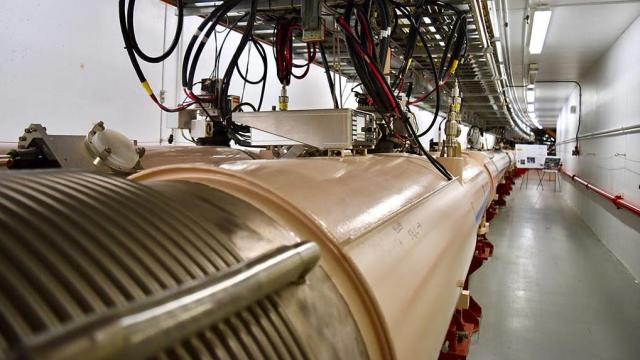The U.S. Department of Energy has decided on the final location of a major upcoming American particle collider: Brookhaven National Lab on Long Island in New York.
The Electron Ion Collider (EIC) is a proposed particle accelerator that will slam electrons into the nuclei of heavy atoms, with the goal of better understanding nuclear structure and the force that holds atoms together. Two national laboratories, Brookhaven and Jefferson Lab in Newport News, Virginia, had been vying for the $US1 ($1) billion+ experiment.
Each location offered an existing experiment that would be incorporated into the EIC. Brookhaven’s 2-mile-round Relativistic Heavy Ion Collider (RHIC) would have provided a source of atomic nuclei, while Jefferson Lab’s Continuous Electron Beam Accelerator Facility, which already does similar work to what the EIC project proposes, would have provided the electrons.
Both laboratories drafted proposals detailing how they’d turn their respective experiments into an electron-ion collider, and local politicians competed for an experiment they hoped would boost the local economy. Science reports that the Department of Energy organised an independent committee to select the location, weighing various factors including the cost of each plan (it’s generally more costly to accelerate ions than electrons, for example).
Scientific agencies have long offered their support for this experiment. The National Academies of Science released an assessment saying that the EIC would be “a unique facility in the world that would answer science questions that are compelling, fundamental, and timely, and help maintain U.S. scientific leadership in nuclear physics.”
The EIC continues a legacy of famous investigations into the structure of the atom, including the Geiger–Marsden experiment, also called Rutherford gold foil experiment. It’s kind of like an electron microscope for an atom; the hope is that observing how the electron beams react to striking a high-energy nucleus will reveal greater detail into the nucleus structure. This includes how the smallest known nuclear particles, quarks, organise themselves in the nucleus and how the strong atomic force holds them together.
Though the Department of Energy supports the project, the EIC’s construction is still subject to further approval and funding, and the project will take more research and scientific advancement to realise all of its components. The EIC is estimated to cost between $US1 ($1).6 billion and $US2.6 ($4) billion, and the DoE says that construction will take 10 years once it begins.
